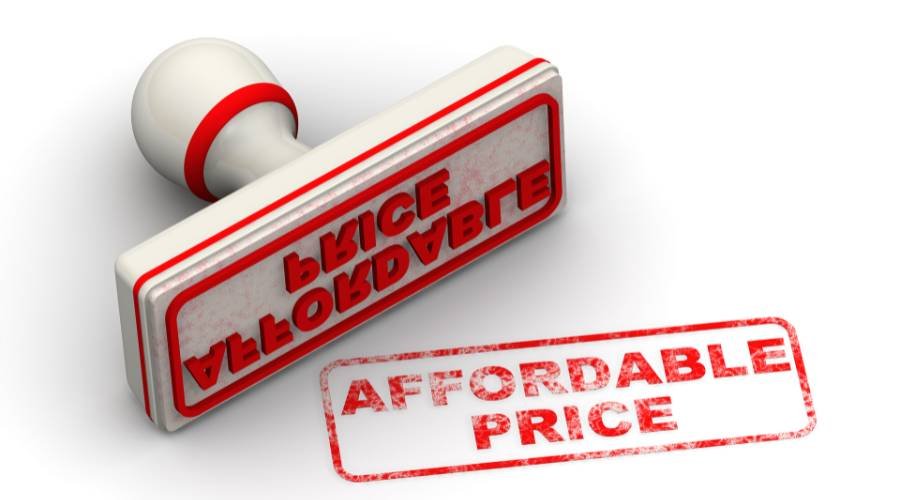In today’s competitive Australian market, pay-per-click (PPC) advertising is a top choice for generating new leads and driving sales. PPC campaigns focus on specific keywords, bringing in more qualified traffic. This reduces the chance of getting the wrong leads and boosts conversion rates over time.
PPC campaigns are especially good for new businesses. They can get results faster than just SEO. But, are you using PPC campaigns to their full potential?
Key Takeaways
- PPC campaigns can deliver more targeted traffic and improve conversion rates
- PPC can help new businesses get faster results than relying on SEO alone
- Effective PPC campaigns require a comprehensive understanding of targeting, bidding, and optimization strategies
- Integrating PPC with other digital marketing efforts can further enhance campaign performance
- Continuous optimization is key to lowering acquisition costs and increasing revenue

What is a PPC Campaign?
In the digital marketing world, pay-per-click (PPC) advertising is a key tool for businesses. It lets them drive sales and boost revenue. Advertisers pay each time someone clicks on their ad. They bid on keywords to show their ads at the top of search results.
Understanding Pay-Per-Click Advertising
The main goal of PPC is to get as many clicks as possible. These clicks should turn into sales. PPC ads can also appear on social media, websites, and more. This makes it a targeted and measurable way to reach customers.
PPC has many benefits. It brings instant traffic, boosts brand visibility, and lets you track and improve campaigns. With PPC, you can quickly test different ads and messages. This helps find what works best for your audience.
| PPC Advertising Statistics | Value |
|---|---|
| 65% of shoppers click on the first ad on the Google Shopping carousel | 65% |
| Cost per click (CPC) for Google Ads | Around $2 |
| Cost per click (CPC) for Facebook Ads | Approximately $1.86 |
| Percentage of search traffic that comes from long-tail keywords | 70% |
By grasping the basics of pay-per-click advertising and using smart strategies, businesses can use PPC campaigns well. This can help drive sales and expand their online presence.
Setting Up Your PPC Campaign
Starting a successful PPC campaign needs careful planning. First, pick the right PPC platform like Google Ads or Bing Ads. These tools help you create, target, and measure your campaigns well.
After choosing your PPC platform, it’s time to craft your ad. You need to pick the keywords you want to target. Then, write ad copy that grabs attention and set a smart PPC budget. A great ad is key to getting clicks and sales.
- Set clear PPC campaign goals, like boosting brand awareness or driving sales.
- Do deep keyword research to find the best and cheapest keywords for your business.
- Write ad copy that shows what makes you special and has a clear call to action.
- Set a PPC budget that fits your goals and tracks your ROI.
- Keep monitoring and optimizing your campaign to make it as effective as possible.
By carefully setting up your PPC campaign, you’ll get more targeted traffic and sales. This will help you reach your business goals.
Optimizing Your PPC Campaign
Starting a PPC campaign is just the first step. To really make it work, you need to keep an eye on it and make changes. Using PPC campaign optimization, PPC ad testing, and PPC data analysis helps you tweak your plan. This way, you can use your PPC budget better and see your PPC performance improve.
A/B testing is a key optimization method. It lets you compare two ads to see which one works best. This helps you pick the right words, pictures and calls to action for your ads.
Looking at your campaign’s data is also key. Finding out which keywords, ads, and groups do well helps you spend your budget wisely. This way, you get the most bang for your buck.
| Optimization Tactic | Benefits |
|---|---|
| A/B Testing | Identifies the most effective ad elements for improved performance |
| PPC Data Analysis | Enables informed budget allocation and optimization |
| Regularly Monitoring and Adjusting | Ensures your campaign remains relevant and responsive to market changes |
By always looking to improve, you can get the most out of your PPC campaign. This leads to lasting growth for your business.
Identifying Your Target Audience
Creating a successful PPC campaign starts with knowing your audience. Look at your current customers to find common traits. Do deep market research to learn about your audience’s needs, wants, and actions.
Also, study your competitors to see what you can do differently. This helps you find new audiences to reach.
Use this info to make detailed buyer personas. These should include things like age, income, and interests. By knowing your ideal customer, you can make ads that really speak to them.
Leveraging Customer Data for Audience Targeting
Tools like Google Analytics give you insights into who visits your site. You’ll learn about their demographics, where they come from, and what they like. Mix this with data from other sources to really understand your audience.
PPC ads have many ways to target your audience. You can target by search, display, or user behavior. This lets you focus your ads on the right people, saving time and money.
| Targeting Approach | Description | Key Benefits |
|---|---|---|
| Search Targeting | Focuses on users’ search queries and intent | Connects with customers actively searching for relevant products or services |
| Display Targeting | Utilizes demographic and behavioral data to serve ads on relevant websites | Reaches a wider audience and raises brand awareness |
| User Targeting | Targets specific individuals based on their online activities and engagement | Personalized ads that resonate with customers and drive higher conversion rates |
By using smart audience targeting, you can make your PPC campaigns better. This will help your business grow and keep getting quality leads.

PPC Campaign for New Brands
Launching a pay-per-click (PPC) campaign as a new brand can be a big step. It can help drive sales and increase brand awareness. We focus on a full-funnel PPC strategy to guide potential customers from the awareness stage to the conversion stage. This means creating different campaigns and ads for each step of the customer journey.
Offering free trials, giveaways, or discounts can help attract more people. These incentives make it easier for potential customers to try your brand. By using retargeting and re-engagement campaigns, you can turn more leads into paying customers.
It’s also important to match your PPC strategy with your brand goals. Whether you want to build brand awareness or generate qualified leads, your PPC campaigns should aim for those goals.
“Starting early with PPC campaigns can help gather leads and build anticipation for new product launches.”
The success of your PPC campaigns for new brands relies on a good strategy and compelling ads. A smooth user experience is also key. By always improving your approach, you can reach and engage your audience better. This drives sales and helps your brand grow faster.
PPC Campaign Platforms and Strategies
Choosing the right platform is key for a successful PPC campaign. The main platforms are Google Ads, Bing Ads, Facebook Ads, Instagram Ads, LinkedIn Ads, and Twitter Ads. We suggest starting with Google Ads for search and Facebook Ads for social media. Then, expand to other platforms based on your business and target market.
Choosing the Right Platform Mix
Your PPC mix should include prospecting, remarketing, and re-engagement campaigns. This helps nurture leads and drive sales. PPC advertising saw an average return of $2 for every $1 spent in 2022, with a CPC of $1.16.
Google Ads handles over 99,000 search inquiries per second. It’s great for search engine marketing. Facebook and Instagram Ads target ads based on demographics and interests, with CPCs of $0.94 and $1.16, respectively.
Using a multi-channel PPC strategy helps reach your audience in many ways. This includes paid search ads, social media ads, and display ads. This approach boosts your brand’s visibility and engagement, improving your return on investment.
Benefits of PPC Campaigns
PPC advertising is a key driver for sales and revenue in Australia. It allows for highly targeted advertising to your perfect customers. This means your ads hit the right people, boosting engagement and sales.
PPC advertising is also cost-effective. You only pay when someone clicks on your ad. This model helps you spend wisely and get the most from your PPC campaign ROI. Plus, you get clear data on how well your ads are doing, helping you improve them.
One big plus of PPC advertising is the fast results it gives. Unlike SEO, which takes time, PPC campaigns can quickly bring in targeted advertising and measurable results. This is great for businesses wanting quick wins in their marketing.
For businesses in Australia, PPC advertising is a powerful tool. It helps reach the right audience, increase website visits, and boost sales. With its focus on targeted advertising, cost-effective approach, and measurable results, PPC campaigns can be a real game-changer.
PPC Campaign Optimization Strategies
To get the most out of your PPC campaigns, you need to keep optimizing. Using various strategies can boost ad performance and bring great results for your business. Let’s look at some key PPC optimization techniques to improve your online ads.
One important strategy is A/B testing your ad creatives and landing pages. This means comparing different versions to find the best ones. It helps us make smart choices based on data. Also, analyzing data to find your top keywords and ad parts is key.
Keeping your keyword lists up to date, including negative keywords, helps target the right audience. This, along with smart budget use, can greatly improve your PPC investment return.
- Conduct A/B testing on ad creatives and landing pages
- Analyze performance data to identify high-performing keywords and ad elements
- Regularly update your keyword lists, adding negative keywords as needed
- Optimize your budget allocation for maximum campaign efficiency
- Leverage ad copy optimization techniques to improve click-through and conversion rates
By using these PPC optimization strategies, you’ll unlock your campaign’s full potential. This will lead to more sales and revenue for your business.
| PPC Optimization Technique | Key Benefits |
|---|---|
| A/B Testing | Identify high-performing ad creatives and landing pages |
| Keyword Optimization | Improve ad relevance and search visibility |
| Budget Allocation | Maximize return on advertising investment |
| Ad Copy Optimization | Increase click-through and conversion rates |
“Continuous optimization is the key to unlocking the full potential of your PPC campaigns. By staying agile and data-driven, you can consistently improve performance and drive impressive results for your business.”
Remember, PPC campaign optimization is an ongoing process. It needs constant vigilance, testing, and a data-driven approach. By using these strategies, you’ll reach your advertising goals and grow your Australian business sustainably.
Conclusion
Pay-per-click (PPC) advertising is a powerful tool for businesses in Australia. It helps drive sales and increase revenue. By understanding PPC, setting up a good campaign, and optimizing, we can reach our audience and convert leads into customers.
It’s important to build brand awareness and nurture leads. PPC offers targeted reach, cost-effectiveness, and measurable results. By integrating SEO and marketing, we can grow our online presence and business.
Effective PPC campaign management unlocks growth opportunities. Staying up-to-date with trends like voice search and AI helps us stay competitive. By fine-tuning our digital marketing strategies, we can keep ahead in the digital world.
FAQ
What is a PPC campaign?
PPC stands for pay-per-click. It’s a way for businesses to advertise online. They pay each time someone clicks on their ad. This happens when users search for specific keywords related to what they offer.
How do I set up a successful PPC campaign?
To start a PPC campaign, choose a platform like Google Ads or Bing Ads. Next, create your ad. Pick the keywords you want to target and write catchy ad copy. Don’t forget to set a budget and decide who you want to reach based on location, age, and interests.
How do I optimize my PPC campaign?
Once your campaign is live, keep an eye on it and make improvements. Look at how your ads are doing and tweak them as needed. A good strategy is A/B testing, where you compare two versions of your ad to see which one works better.
How do I identify my target audience for a PPC campaign?
Knowing who to target is key. Start by understanding what you offer and what problems it solves. Look at your current customers to see what they have in common. Then, do some research to learn more about your ideal customer’s needs and behaviors.
How can I use PPC advertising to launch a new brand?
Starting a new brand with PPC can be tough. You’re competing in a crowded space. Focus on building awareness and getting leads with a full-funnel PPC strategy. Create different campaigns and ads for each step of the customer journey, from first awareness to making a purchase.
What are the key benefits of PPC advertising?
PPC has many benefits for businesses. It’s targeted and cost-effective, as you only pay for clicks. You can measure results to improve your strategy. Plus, PPC can bring quick results, unlike SEO which takes longer.




